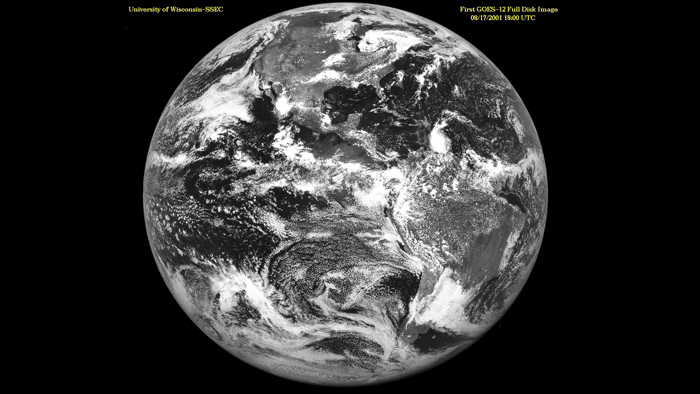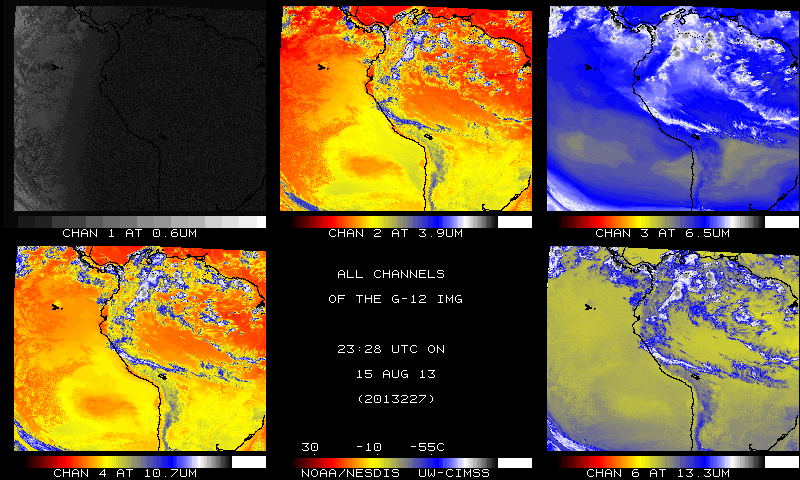Looking back at GOES-12, looking forward to GOES-R
By Zhengzheng Zhang
On August 16, 2013, the National Oceanic and Atmospheric Administration (NOAA) retired the Geostationary Operational Environmental Satellite-12 (GOES-12 satellite), after ten years of service monitoring severe weather in the Atlantic basin and South America. According to Mary E. Kicza, NOAA assistant administrator for Satellite and Information Services, the NOAA visualization laboratory has produced a video of the life of the satellite by animating full-disk images from each day it functioned as the operational Eastern satellite.
Video: 10 Years of Weather History in 3 Minutes
This event holds significance for the Cooperative Institute for Meteorological Satellite Studies (CIMSS) and the Space Science and Engineering Center (SSEC) at the University of Wisconsin-Madison, because both have been involved in the GOES program for decades. Scientists in Madison are involved in algorithm development, instrument and product validation, data processing and assimilation and weather forecasting. For example, working with the NOAA group stationed in Madison, CIMSS scientists were key participants in the post-launch checkout of GOES-12. In addition, the SSEC Data Center acquired the GOES-12 imager and sounder data when the satellite operated out of 60W in support of South America. These data were then processed by CIMSS, placed on the Web, and made available to other users.
CIMSS and SSEC efforts in the geostationary satellite program can be traced back to the 1960s, when NASA launched the first Applications Technology Satellite (ATS-1), demonstrating the value of geostationary orbit for maintaining a continuous watch over one spot on the globe. The Spin-Scan Cloud Camera, invented by UW Professors Verner Suomi and Robert J. Parent and carried on board ATS-1, provided full disk visible images of the Earth and its cloud cover every 20 minutes, revolutionizing earth observation science. Professor Suomi’s concept was later applied to the design of the Visible/IR Spin Scan Radiometer (VISSR), the primary instrument on the Synchronous Meteorological Satellite (SMS) 1-2 and GOES 1-3 spacecraft. The instrument offered day and night observations of cloud and surface temperatures, cloud heights, and wind fields.
CIMSS scientists are currently focusing their efforts on the GOES-R Project, the next step in the GOES program, aiming to get the world ready for the next generation of weather forecasting. The GOES-R series of satellites will be comprised of improved spacecraft and instrument technologies, which will result in more timely and accurate weather forecasts, and improved support for detection and observation of severe weather events that directly affect public safety. CIMSS and SSEC scientists are making direct contributions to GOES-R risk reduction, algorithm development, GOES-R instrument trade studies and proving ground projects. The first launch of the GOES-R series satellite is scheduled for late 2015.


